Project Summary
The project implies planning the trip of lifetime for a family of four during three weeks with a budget of $35,000; the project begins on 08/15/2020 and ends on 08/20/2020. The scrum approach is utilized as a methodology, and the project charter and the Work Background Structure are presented as tools to complete the plan.
- Planning the trip of a lifetime for a family of four.
- The trip duration is three weeks.
- $35,000 as an accessible budget to use.
- Planning costs, stakeholder roles, schedule, and resources.
- Using the scrum approach as a basic project management methodology.
- Compiling the Work Background Structure (WBS) as a useful visual tool.

Project Charter
Develop a vacation project plan at a projected cost of $35,000 with a start date of August 15, 2020 and a completion date of August 20, 2020.
- The charter includes the problem statement.
- Business case and benefits are discussed in the charter.
- The goal statement is identified to determine the scope of work.
- The timeline is presented with appropriate activities.
- The methodology of the project is included (the scrum approach).
- The main stakeholders are identified in the charter.
Problem Statement
There is a need to allocate the available resources reasonably to organize a good trip and perform attendant tasks successfully to avoid problems and missed steps.
Goal Statement
Planning the trip of a lifetime for a family of four during three weeks with a budget of $35,000.
PM Methodology
The scrum methodology as an appropriate mechanism to pan the project in short terms and manage all the attendant tasks successfully.
Business Case and Benefits
The project is necessary as a guide to action and can help a family of four to count on the full coverage of all the necessary procedures. Goals and initiatives are designed in detail to prevent surprises and extra costs.
Timeline
- Day 1: Allocating the budget funds.
- Day 2: Planning extra costs (transportation, luggage, and other sources).
- Day 3: Analyzing optimal procedures (introducing a specific PM methodology to plan the activities).
- Day 4: Finding weaknesses and discussing the project with the stakeholders.
- Day 5: The final evaluation of the plan with the detailed analysis of each stage.
Main Activities
Determining destinations, planning paperwork, reservations (airfare, transportation, and accommodation), planning pastime, and activities at home during the vacation.
The proposed project charter includes the key aspects of the project, which need to be taken into account to follow planning standards. According to the Project Management Institute (n.d.), the key characteristics that should be included in these plans require that all issues be fully covered to be taken into account and maintain analytical balance and openness. Thus, this algorithm is a convenient mechanism for planning work.
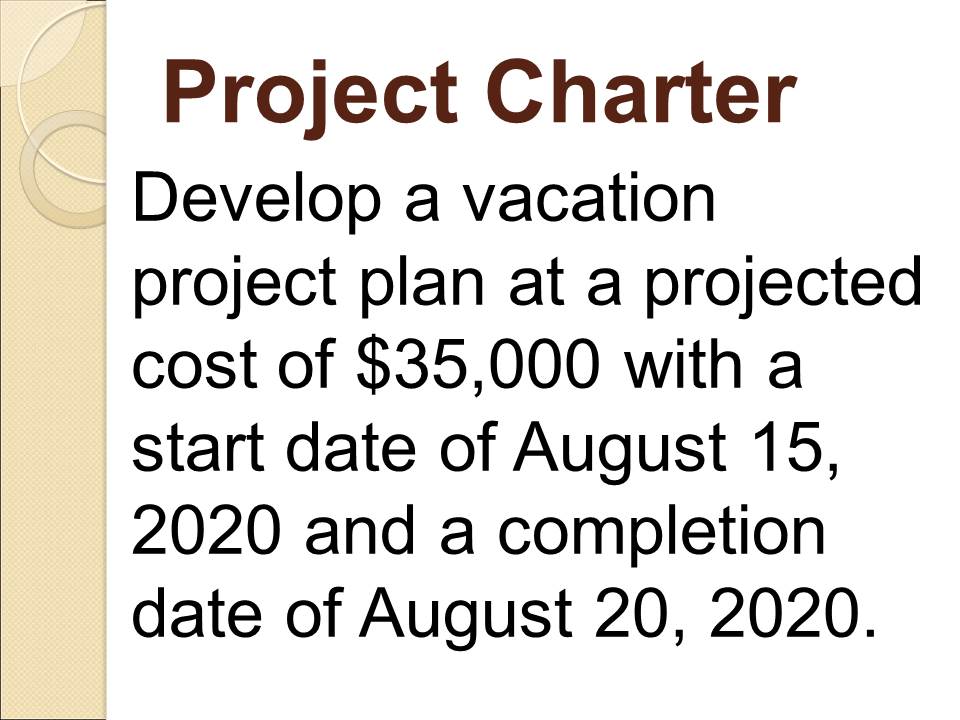
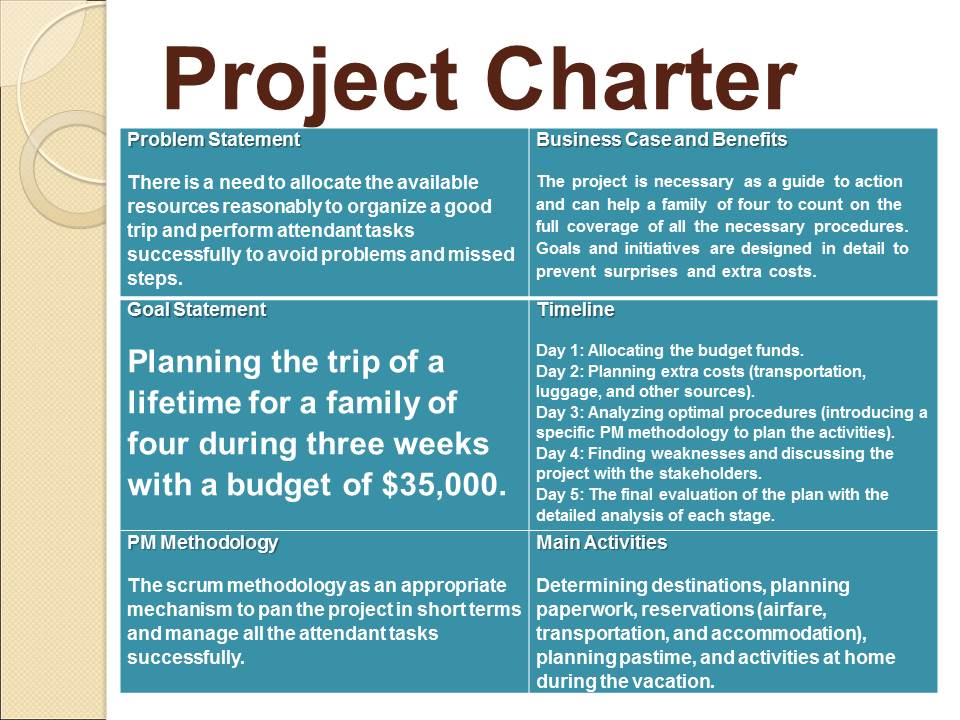
Stakeholder Register
- Both internal and external stakeholders are involved.
- Family members are internal stakeholders.
- Different vendors are external stakeholders.
- A travel agent and hotel managers.
- Transportation services and tourist guides.
- The list includes all the interested parties.
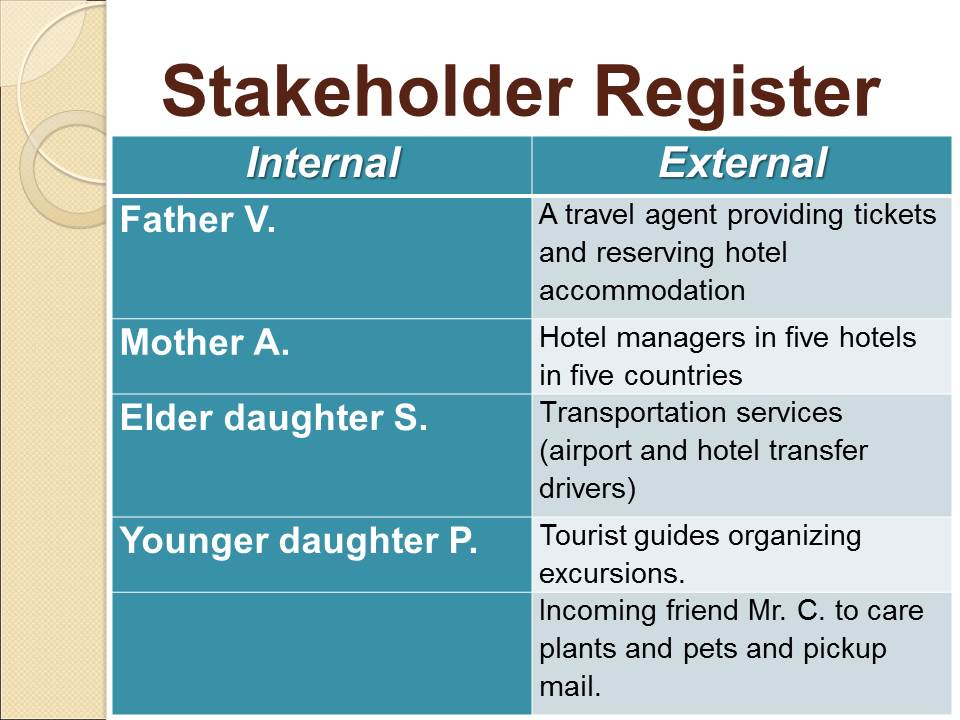
PM Methodology
- Managing project teams requires an appropriate methodology (Kloppenborg et al., 2019).
- The scrum approach as a mechanism.
- Realizing the plan in short terms.
- Creating interdependencies among tasks to avoid mistakes.
- The planning team is at the center.
- Setting priorities to perform all the tasks assigned based on their relevance.
The proposed methodology is an approach that contributes to solving the necessary tasks within the framework of a specific project in short terms. One of the key features is finding interdependencies among specific steps and setting priorities in accordance with the relevance of interventions. The scrum approach is a convenient algorithm for compiling a work breakdown structure and may be utilized successfully as a tool to rally all the team members to achieve the goals of the given project.
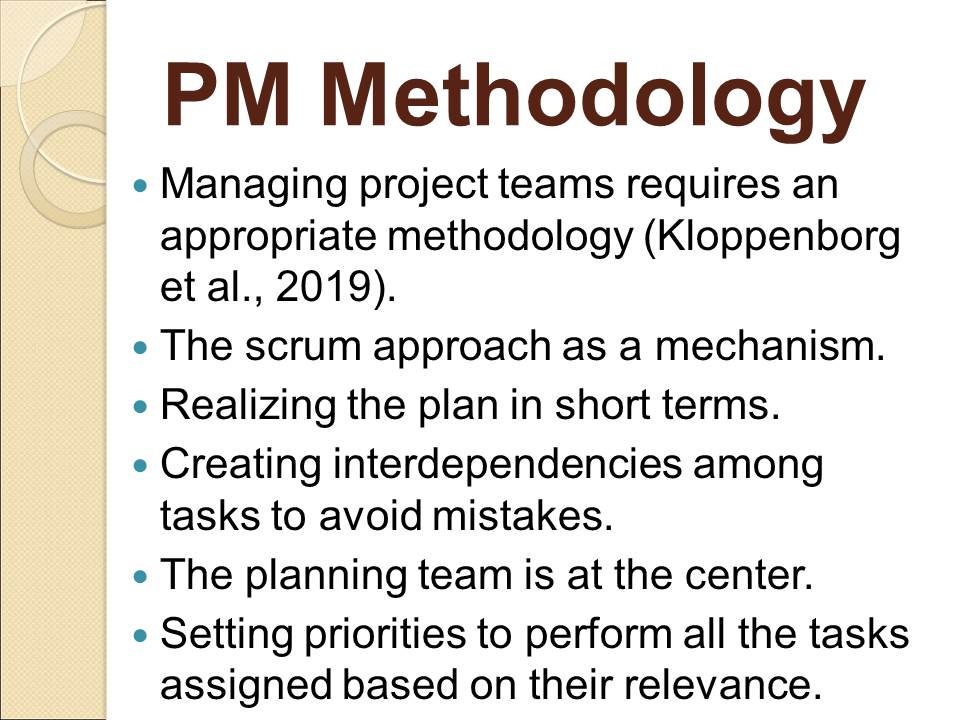
Work Breakdown Structure
- The destination as the main project element (internal stakeholders).
- Paperwork and pastime as additional elements (internal stakeholders and an agent).
- An individual task related to home control (an incoming friend).
- Costs on reservations – accommodation and transportation (hotel managers and drivers).
- Every part needs analyzing individually.
- The structure contains all the relevant costs on the trip.
- Destination;
- Paperwork:
- Passports;
- Tickets.
- Reservations:
- Airfare;
- Transportation;
- Accomodation.
- Pastime:
- Entertainment;
- Restaurants.
- Home:
- Plants;
- Pets;
- Mail Pickup.
The presented WBS is a scheme that displays all the current costs planned to spend on the trip. The three most significant components need to be analyzed: paperwork, pastime, and reservations, and this elements make up the bulk of the budget. A small portion of the funds should be spent on house maintenance while the family is on their trip, including caring for plants and pets, as well as mail collecting.
Project scope:
- Day 1 – planning destination places and conducting paperwork.
- Day 2 – the necessary reservations.
- Day 3 – compiling the range of activities.
- Day 4 – discussion with the main stakeholders.
- Day 5 – final evaluations with additional details (pastime and home activities).
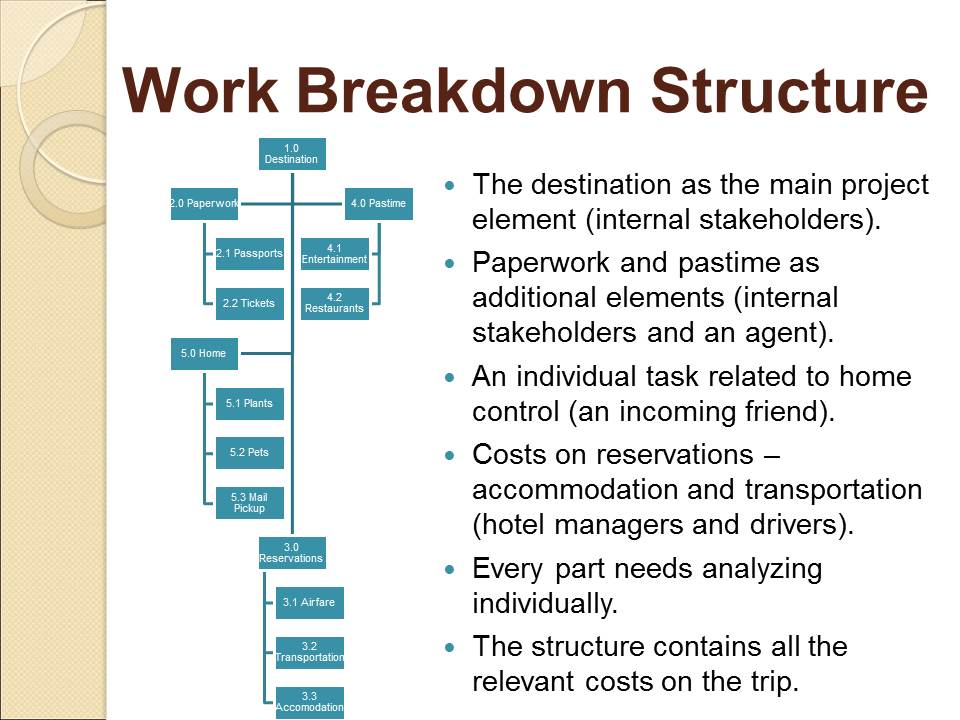
Outcomes
- Various standards for PM algorithms (Drob & Zichil, 2013).
- The individuality of the plan requires making a detailed WBS.
- Project leaders use the scheme to estimate costs.
- Stakeholders need to be mentioned in any project (Fister Gale, 2016).
- Addressing each cost items is crucial.
- The project charter overviews the plan.
The given evaluation algorithms for the project under consideration are convenient tools to analyze all the expense items and evaluate the necessary steps for implementing the entire plan. Mentioning stakeholders is a significant aspect of any project involving planning. A detailed project charter helps assess all the nuances of the upcoming work and determine the range of interventions to avoid mistakes and the potential lack of funds.
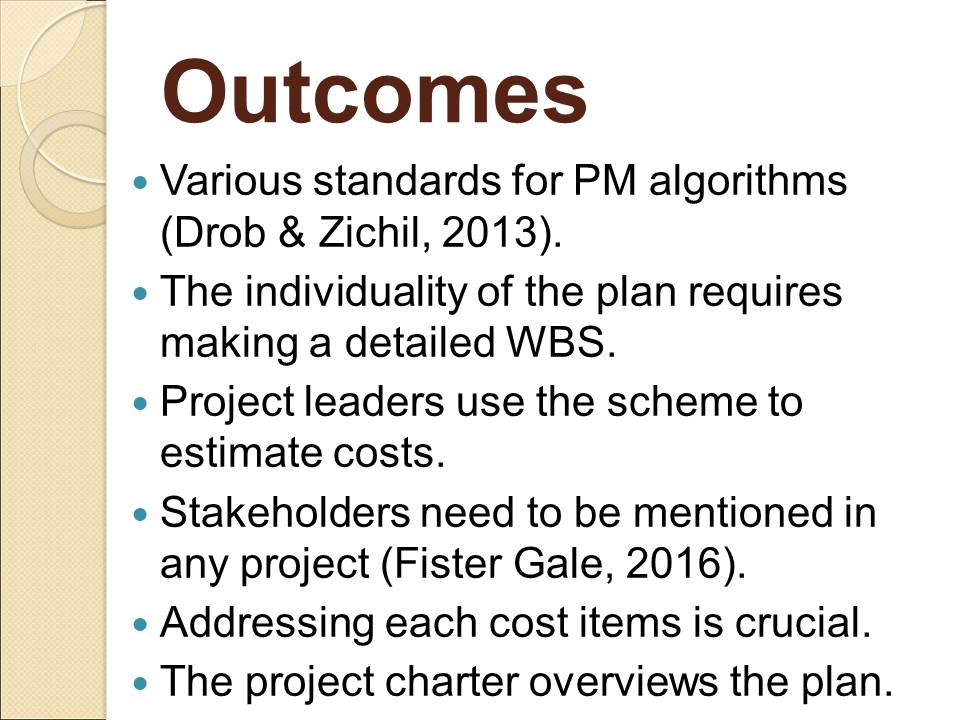
References
Drob, C., & Zichil, V. (2013). Overview regarding the main guidelines, standards and methodologies used in project management. Journal of Engineering Studies and Research, 19(3), 26-31. Web.
Fister Gale, S. (2016). Making the case: Business-case templates give project teams the direction they need to deliver the right project, right on time. PM Network, 30(6), 62-71.
Kloppenborg, T., Anantatmula, V. S., & Wells, K. (2019). Contemporary project management (4th ed.). Cengage Learning.
Project Management Institute. (n.d.). About standards. Web.